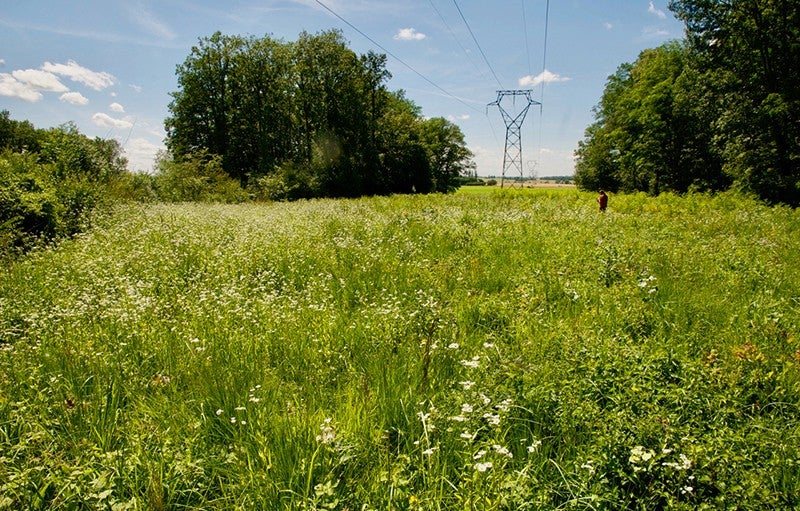Green Infrastructure

Often viewed as scars on the landscape, power transmission corridors might seem like unlikely sites for ecological restoration or preservation. But around the world, utilities are taking a more sustainable approach to managing vegetation and habitat below and alongside power lines. These practices not only have a positive impact on landscapes and make power corridors more hospitable to wildlife, but they can reduce the risk of wildfires and the cost of managing vegetation.
“Electrical infrastructure can become biological infrastructure,” said Gérard Jadoul, who led a seven-year project that transformed more than 1,200 acres of land into green corridors in southern Belgium and in France.
Funded in part through the European Commission’s LIFE Program, the LIFE Elia-RTE project helped to revive plant and animal species along 35 different electrical corridors. The project’s cost-benefit analysis demonstrated that sustainable practices can be up to four times less costly than traditional vegetation management over the long term by reducing the need for ongoing maintenance.
The project, which Jadoul described at the International Land Conservation Network 2018 Global Congress, built on decades of work in North America and elsewhere to develop alternatives to the traditional practice of clearing vegetation beneath power transmission lines.
The new approaches vary by country and site, but they all have sprung from a common insight. Rather than constantly cutting down tall trees only to see them regrow and pose a threat to reliable electricity, power companies can promote the growth of different, shorter plants that are compatible with power lines. These plants can crowd out taller trees – at least temporarily – by consuming the water, nutrients, and other resources along a corridor.
“What we’re doing is reverse forestry. It’s manipulating competition,” said John Goodfellow, a consultant and member of the Right-of-Way Stewardship Council, an organization that promotes the approach known as integrated vegetation management. “It isn’t about controlling the trees that will go up into the wires. It’s about managing floor covers that will out-compete the trees.”
Power line operators from Australia to South America are taking interest in sustainably managing rights of way, and studies are underway in Chile, inspired in part by destructive wildfires last year – one of the worst in the nation’s history.
“For the first time, we have regulators and companies paying a lot of attention to vegetation management practices,” said Daniela Martínez, an energy and natural resources attorney in Santiago, Chile, who attended meetings of a government task force created to study transmission lines after the wildfires.
Martínez said now is an opportune time for Chile, which has an extended transmission network, equivalent in length to crossing Europe from North to South, to re-think it’s vegetation management practices as it prepares for a massive expansion of its electrical transmission network.
“The impact that it could have in countries that are still developing their energy infrastructure is enormous,” she said.
This article was originally posted on the At Lincoln House blog and is the third in a series building on themes from the International Land Conservation Network 2018 Global Congress. Read the first post for an overview of the conference, and the second post for an exploration of carbon markets.
Photo courtesy of LIFE Elia-RTE